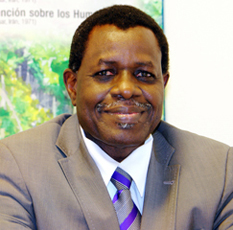
2011 is a special year for the Ramsar Convention on Wetlands. On 2 February, it celebrated the 40th anniversary of the meeting of 18 countries in the Iranian city of Ramsar to create this intergovernmental treaty. Over the past 40 years, 160 countries have become party to the Convention, and 1,911 Wetlands of International Importance, which cover over 186 million hectares, have been named by these countries. These “Ramsar Sites” represent the largest global network of protected areas.
Since 1997, 2 February also has been celebrated globally as World Wetlands Day (WWD), and this year WWD 2011 was focused on “Forests for water and wetlands,” recognizing that the UN General Assembly has declared 2011 as the “International Year of Forests.”
Ramsar defines wetlands as permanently or temporarily humid areas. They include lakes, rivers, ponds, marshes, swamps, peat bogs, beaches, reefs, mangrove forests … and more. Wetlands are more than just a muddy swamp – many economists looking at the ecosystem services they deliver put their value higher than for any other ecosystem. Yet wetlands continue to be destroyed to make way for inland and coastal developments and degraded through poor water allocation decisions, pollution, and excessive water extraction.
The Convention has many tools to encourage sustainable management of wetlands, but equally important are the tools that manage at an ecologically more ‘coherent’ scale, at the river basin level. Those tools help in dealing with the global reality that many wetlands and their river basins cross national boundaries and require transboundary initiatives for effective management. Another challenge for all environmental treaties is working across sectors. For Ramsar implementers, working with the water sector, which manages water rather than the wetlands that carry the water, requires raising officials’ awareness of the need to take full account of the suite of ecosystem services that wetlands deliver. Integrated water management initiatives can be counter‐productive if wetlands and their ecosystem services are left out of them. Most of all, the Convention’s member countries need to harness the political will within their countries to raise the level of importance for sustaining the health of the wetlands that supply such essential services to all people whether rich or poor.
Communicators tell us that people respond better to positive messages than to doom and gloom, although the latter is an understandable response from those of us alarmed by the loss and degradation of wetlands. Join us in a year of positive celebration by using this as an opportunity to publicize both the natural beauty and the practical utility of wetlands. The Ramsar Secretariat has prepared materials for use in celebrations, and each month we will be elaborating one of our 12 key messages about wetlands and the Convention to inspire action at international, national and local levels.
To find out more about the 40th activities,
click here. Additional information on World Wetlands Day is available
here.

